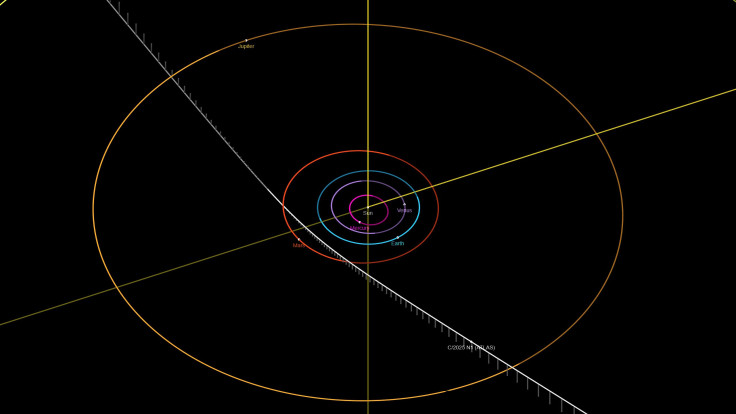
The interstellar comet known as 3I/ATLAS has captured the attention of scientists and space enthusiasts since it was first spotted earlier this year. In a surprising update, scientists captured video footage of 3I/ATLAS for the first time since late October after it suddenly vanished behind the Sun.
On Sunday, 9 November 2025, astronomer Joan Miguel Gonzalez Navarra of the Sabadell Institute captured video footage of 3I/ATLAS drifting through the Solar System. In a 20-minute observation made up of 20 exposures that are 60 seconds each, Navarra tracked the interstellar comet under an 83% illuminated Moon. Navarra also noticed an unusual detail upon observing the comet, as it looked like it was falling apart.
This marks the first footage of 3I/ATLAS since it vanished behind the Sun in late October. It remains to be seen whether the interstellar comet is falling apart since passing by the Sun.
3I/ATLAS Flies Past Mars
The Chinese Tianwen-1 Orbiter also previously captured more footage of 3I/ATLAS, with the orbiter being the closest mission to observe the comet. The China National Space Agency said the Tianwen-1 mission took photos of the comet from a distance of 30 million kilometres. Images released by the CNSA show the comet's features, including the tail and its gaseous coma.
CNSA collated the images into a GIF animation that shows its trajectory and path close to the Sun. The photos taken by the Tianwen-1 also reinforce the belief that 3I/ATLAS is an interstellar comet made up of water and volatile elements that are outgassing the closer it gets to the Sun.
This also gives scientists and space enthusiasts a preview of what the Tianwen-2 mission might see when it meets a Near-Earth Asteroid (NEA) and the comet in the near future.
Don't Believe in the Conspiracies, Scientists Say
The interest in 3I/ATLAS has led to many speculations and conspiracy theories, with some theories suggesting that it may actually be an alien spacecraft passing through. However, according to Qicheng Zhang of the Lowell Observatory in Arizona, the theories are just simply theories.
Zhang was especially referring to the findings that 3I/ATLAS was experiencing a 'rapid brightening' of the comet's coma as it passed by a star. Other observations saw the comet appearing more red, while a preprint study co-authored by Zhang saw that 3I/ATLAS was 'bluer than the Sun'.
'We don't have any evidence for the gas coma changing colours,' Zhang told Space.com on 7 November. 'Our result just showed that the gas coma is likely still around and contributing substantially to the overall brightness.'
Speaking with Popular Science, Zhang also expressed frustration with the conspiracy theories being pushed out, including from other scientists, specifically Dr Avi Loeb. The astrophysicist has often suggested that 'alien tech' may be the reason for the discolouration of the comet.
'I think my main source of annoyance, though, is just that so much has been propagated by someone with a background in science who should know better,' said Zhang. 'A large fraction of misinformation I've seen floating around can be directly traced back to him misinterpreting, not fully reading the papers or data he comments on.'
Zhang also emphasised that the brightening 3I/ATLAS was experiencing started happening in early September. But Zhang expressed that they hope more people start seeing that the so-called anomalies are simply what comets tend to do and be more interested in further understanding them.







